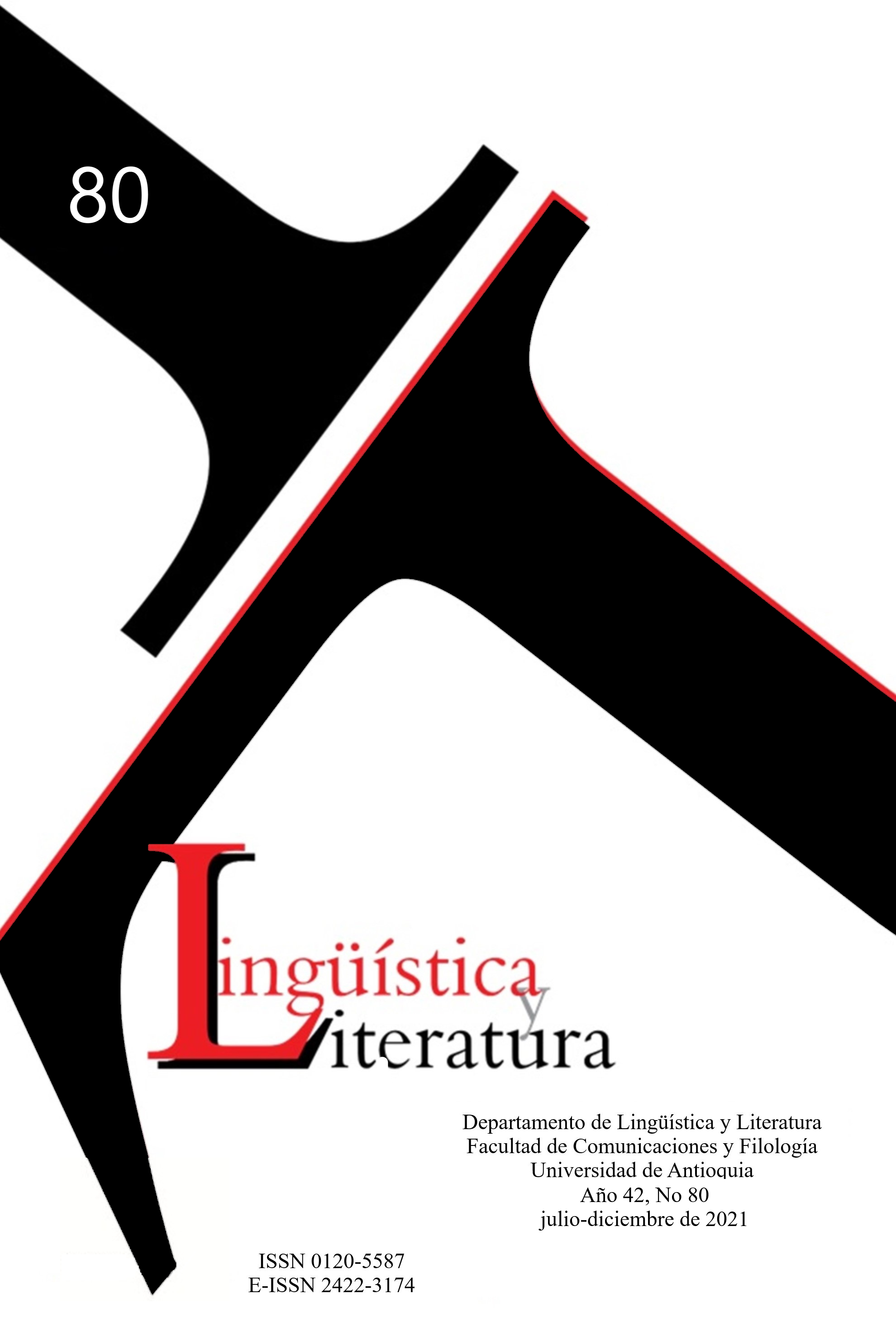Literary Criticism about Literature of la Violencia in Colombia: An Approximative Reevaluation
DOI:
https://doi.org/10.17533/udea.lyl.n80a04Keywords:
literature of la Violencia, testimonial genre, bipartisan violence, literary criticismAbstract
This article aims to review the main postulates of literary criticism about the narrative of la Violencia in Colombia in order to point out some of the most common inaccuracies that have been transmitted and consolidated in the understanding of this phenomenon. Through the analysis of the Colombian literary context of that time, this paper seeks to understand the causes that lead to such inaccuracies. Furthermore, it searches to reevaluate the use that these critical studies have given to the concept of «testimony», essential for the literary evaluation of the novels that compose the corpus of literature of la Violencia.
Downloads
References
2. Álvarez Gardeazábal, G. (1970). La novelística de la Violencia en Colombia. Cali: Universidad del Valle.
3. Ayala Poveda, F. (1984). Manual de literatura colombiana. Bogotá: Educar Editores.
4. Barthes, R. (1966). Crtítica y verdad. Buenos Aires: Siglo xxi.
5. Blair Trujillo, E. (Enero-Junio de 2008). Los testimonios o las narrativas de la(s) memoria(s). Estudios Políticos (32), 85-115.
6. Escobar Mesa, A. (1997). Literatura y violencia en la línea de fuego. En A. E. Mesa, Ensayos y aproximaciones a la otra literatura colombiana. Bogotá: Fondo Editorial Universidad Central.
7. García, G. V. (2003). La literatura testimonial latinoamericana: (re) presentación y (auto) construcción del sujeto subalterno. Madrid: Editorial Pliegos.
8. Gómez Corena, P. (1951). 09 de abril. Bogotá: Iqueima.
9. Marín Colorado, P. A. (2015). La novela colombiana ante la historia y la crítica literarias (1934-1975). Estudios de Literatura Colombiana (36), 13-35.
10. Monroy, L. (2011). La novela de la violencia bipartidista y una reflexión sobre la violencia posterior. En L. M. Zuluaga, J. L. Gaitán, L. V. Celemín y C. D. Castro (Eds.), Cien años de novela en el Tolima: (1905-2005) (pp. 31-96). Ibagué: Universidad del Tolima.
11. Osorio, L. E. (1965). ¿Quién mató a Dios? Bogotá: Antares.
12. Osorio, O. (2006). Siete estudios sobre la novela de la Violencia en Colombia, una evaluación crítica y una nueva perspectiva. Poligramas (25), 85-108.
13. Pareja, C. H. (1954). El monstruo. Buenos Aires: Editorial Nuestra América.
14. Restrepo, L. (1985). Niveles de realidad en la literatura de la «Violencia» colombiana. Once ensayos sobre la Violencia (pp. 117-170). Bogotá: Fondo Editorial CEREC.
15. Ruedas Arciniegas, P. (1951). Ciudad enloquecida. Bucaramanga: Imprenta del Departamento.
16. Suárez Rendón, G. (1966). La novela sobre la violencia en Colombia. Bogotá: Luis F. Serrano.17. Téllez, H. (2016). Crítica literaria iii: 1957-1967. Bogotá: Instituto Caro y Cuervo.
Downloads
Published
Versions
- 2021-11-14 (2)
- 2021-07-30 (1)
How to Cite
Issue
Section
License
Creative Commons by-nc-sa
Those authors who have publications with this journal, accept the following terms:
1. The journal is the owner of the copyright of the articles, which will be simultaneously subject to the Creative Commons Attribution-NonCommercial-ShareAlike 4.0 International License. that allows third parties to share the work provided its author is indicated and its first publication in this journal.
2. The authors may adopt other agreements of non-exclusive license of distribution of the version of the published work (e.g., deposit it in an institutional telematic file or publish it in a monographic volume) provided that the initial publication in this journal is indicated.
3. Authors are allowed and recommended to disseminate their work via the Internet (e.g. in institutional telematic files or on their website) before and during the submission process, which can produce interesting exchanges and increase citations of the published work.










